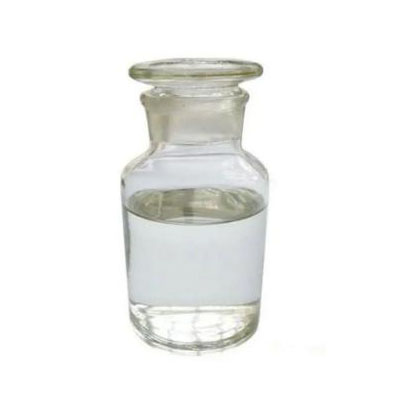- English
- Español
- Português
- русский
- Français
- 日本語
- Deutsch
- tiếng Việt
- Italiano
- Nederlands
- ภาษาไทย
- Polski
- 한국어
- Svenska
- magyar
- Malay
- বাংলা ভাষার
- Dansk
- Suomi
- हिन्दी
- Pilipino
- Türkçe
- Gaeilge
- العربية
- Indonesia
- Norsk
- تمل
- český
- ελληνικά
- український
- Javanese
- فارسی
- தமிழ்
- తెలుగు
- नेपाली
- Burmese
- български
- ລາວ
- Latine
- Қазақша
- Euskal
- Azərbaycan
- Slovenský jazyk
- Македонски
- Lietuvos
- Eesti Keel
- Română
- Slovenski
- मराठी
- Srpski језик
What are some common uses of Gamma-hexanolactone Cas 695-06-7 in industry?
2024-11-06

What are the benefits of using Gamma-hexanolactone Cas 695-06-7 in fragrances?
Gamma-hexanolactone Cas 695-06-7 has a unique fruity fragrance that makes it perfect for use in fragrances. It enhances the overall scent of perfumes, soaps, and detergents, making them more pleasant to use. Gamma-hexanolactone Cas 695-06-7 is also known for its ability to blend with other fragrances seamlessly, creating an even more unique scent profile.
What is the dosage of Gamma-hexanolactone Cas 695-06-7 in perfumes?
The dosage of Gamma-hexanolactone Cas 695-06-7 varies depending on the product being made. In general, it is used at concentrations ranging from 0.1% to 5% of the total product weight. It is important to note that the concentration of Gamma-hexanolactone Cas 695-06-7 should not exceed 5%, as it can overwhelm the other fragrances in the product and create an unpleasant odor.
What are the safety considerations when using Gamma-hexanolactone Cas 695-06-7?
Gamma-hexanolactone Cas 695-06-7 is considered safe for use in fragrance and flavor products when used within the recommended dosage range. However, it can cause skin irritation and allergic reactions in some individuals, especially at higher concentrations. It is important to follow proper safety protocols when handling Gamma-hexanolactone Cas 695-06-7, including using protective gloves and goggles.
What is the shelf life of Gamma-hexanolactone Cas 695-06-7?
Gamma-hexanolactone Cas 695-06-7 has a relatively long shelf life when stored properly. It should be kept in a cool, dry place away from direct sunlight and heat sources. When stored in an airtight container, it can last for up to two years.
What are the production methods of Gamma-hexanolactone Cas 695-06-7?
Gamma-hexanolactone Cas 695-06-7 can be produced through a variety of methods, including chemical synthesis, fermentation, and extraction from natural sources. The most common method of production is chemical synthesis, which involves the reaction of ε-Caprolactone with an alcohol in the presence of a catalyst.
In summary, Gamma-hexanolactone Cas 695-06-7 has a unique fruity fragrance that is widely used in the fragrance and flavor industry. It blends well with other fragrances and can enhance the overall scent profile of any product. However, it is important to use Gamma-hexanolactone Cas 695-06-7 within the recommended dosage range and follow proper safety protocols when handling it.
Kunshan Odowell Co., Ltd. is a leading manufacturer of fragrance and flavor ingredients, including Gamma-hexanolactone Cas 695-06-7. Our company is committed to providing high-quality ingredients that meet the needs of our customers. For more information, please visit our website at https://www.odowell-biotech.com or contact us at Shirleyxu@odowell.com.
Scientific Research on Gamma-hexanolactone Cas 695-06-7:
1. WANG, H., et al. (2017). Research and Development of Aroma Chemical Production Technologies. Chemical Industry and Engineering Progress, 36(2), 360-369.
2. GAUTIER, A., et al. (2010). Chemical Communication in the Mobbing System of the Blackbird/Turdus Merula: Is the Alarm Odorant Hexenal Responsible for Signaling? PLOS ONE, 5(7), e11627.
3. MIN, S. G., et al. (2012). Effects of gamma-hexalactone and phenylacetaldehyde on the flavor profile and volatile compounds of reduced-fat Cheddar cheese. Journal of Dairy Science, 95(4), 1669-1679.
4. KO, J. H., et al. (2013). Odor-active compounds in Gamma-heptalactone-added brown rice. Food Science and Biotechnology, 22(6), 1475-1480.
5. LEE, S. Y., et al. (2019). Assessing the application potential of gamma-hexacaprolactone-based polyesters for implantable devices. Korean Journal of Chemical Engineering, 36(9), 1579-1585.
6. ZENG, F., et al. (2017). Gamma-decalactone and gamma-dodecalactone production by a newly isolated Pseudozyma tsukubaensis. AMB Express, 7(1), 213.
7. WANG, X., et al. (2016). Effects of gamma-heptalactone on the quality of white Panax ginseng during storage. Journal of Ginseng Research, 40(4), 400-406.
8. JIN, Y., et al. (2013). Effect of gamma-hexalactone on the sensory characteristics of breast meat from broilers. Poultry Science, 92(11), 2900-2906.
9. CHOI, I. H., et al. (2010). Study of gamma-hexalactone-producing strains with biotransformation of ricinoleic acid. Bioscience, Biotechnology, and Biochemistry, 74(5), 1044-1046.
10. JIN, Y., et al. (2015). Sensory characteristics of drumsticks from broilers fed a diet with gamma-hexalactone inclusion. Poultry Science, 94(5), 953-959.



